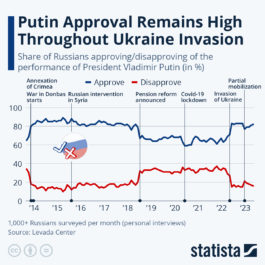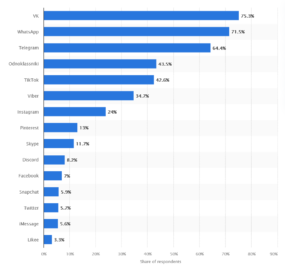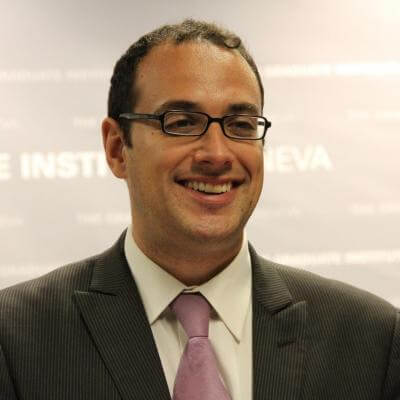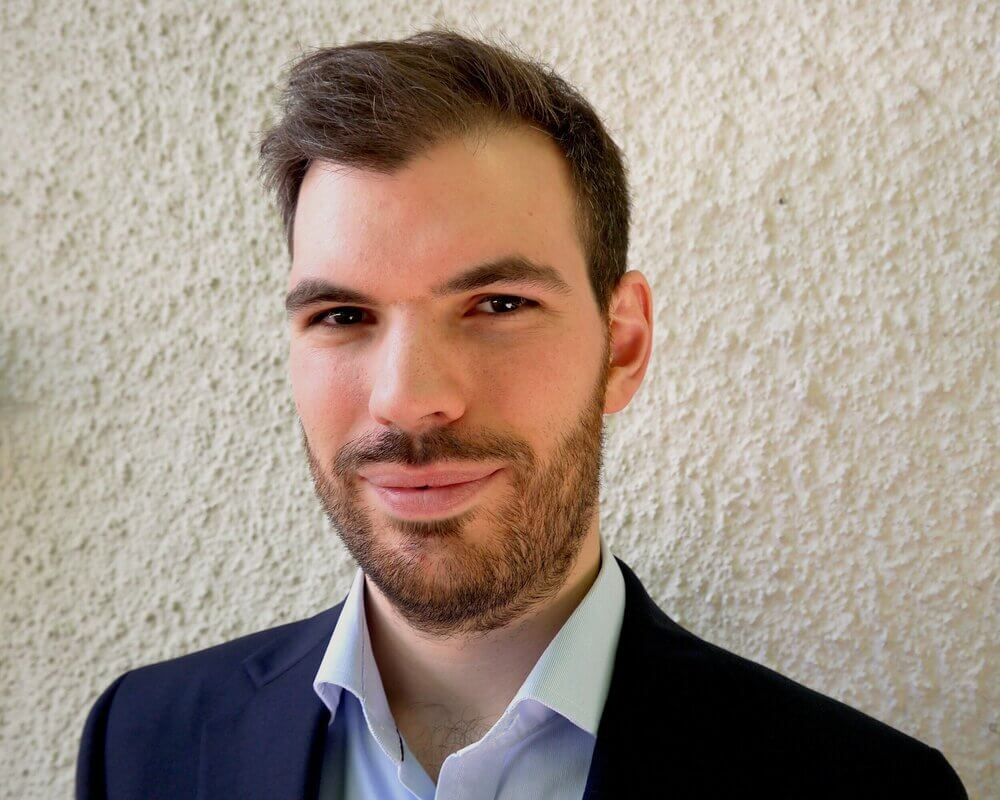The Propaganda War over Ukraine: Unanimity, on Both Sides?
The war in Ukraine is entering its second year. Casualties, both Ukrainian and Russian, are estimated (neither side will reveal the exact number) at over 200,000. Meanwhile, the propaganda war is continuing.
In the West, there is widespread agreement that the issue at hand is the unprovoked invasion of one country by another. The issue has made NATO relevant again. A few years ago, the French president declared NATO brain dead. No one would say that today. NATO has been restored to its initial function – to keep the Russians out of Europe – as laid out in the North Atlantic Treaty of 1949, but with many more members. This goal presupposed, then as now, an American umbrella. In fact, the war has become an American-Russian proxy war over Ukraine. The United States has become the main supplier of arms to Ukraine and it has kept its European allies loyal to its cause. Although the war has been costly for the United States, a situation that may or may not prevail in the newly elected Republican Congress, it has reaped numerous advantages. Western sanctions, particularly those on the importation of Russian energy, have forced Europe, previously heavily dependent on Russian imports, to seek other sources. Among these are the fruits of American fracking. This winter, European states had to introduce measures of economy and to raise their military budgets in anticipation of a Russian invasion, even as they were debating which arms to offer to Ukraine. The United States, also suffering from inflation, need not fear a Russian invasion but is also careful to supply Ukraine only with weapons that could forestall a NATO-Russian war.
Particularly striking is the unanimity of Western media opinion about the Ukrainian war. Unlike the situation with the Iraq wars, and even going back to Vietnam, the media are at one with their governments in condemning the Russian invasion of Ukraine. Although President Biden has not been entirely successful in portraying the conflict as one between democracy and authoritarianism, this has not changed the outlook of most people.
The few dissenters, including those who call for an end to the conflict or who point to the dangerous effects of the expansion of NATO, are labelled as naïve or, worse, as Russian stooges. Even when the Ukrainians published a “black list” containing several dozen Western individuals considered insufficiently supportive of the Ukrainian cause, it caused little uneasiness in the West.
 Share of Russians who approve/disapprove of the performance of President Vladimir Putin (in %). Data since 2014 are provided by the Levada Center, based on a representative sample of over 1000 people 18 or older.
Share of Russians who approve/disapprove of the performance of President Vladimir Putin (in %). Data since 2014 are provided by the Levada Center, based on a representative sample of over 1000 people 18 or older.Russia has refused to call the Ukrainian conflict a war. It has used the term “special military operation”, presumably to avoid unrest among its own population. The game plan of the Kremlin was as follows: to capture the Ukrainian capital, Kyiv, in a few days, in order to replace the present regime with one that would share the view expressed by Putin in an article in 2021, describing Ukrainians and Russians as one people. Instead, Kyiv refused to fall, among an outpouring of anti-Russian Ukrainian nationalism. For a few months, the war or “special military operation” seemed far away to the Russian public. Only in September 2022 did the partial mobilisation decreed by the Kremlin bring home to the Russians the reality of war next door. Only in September 2022 did the partial mobilisation decreed by the Kremlin bring home to the Russians the reality of war next door The mobilisation inaugurated a new flood of Russian refugees, adding to the millions of Ukrainians who had already fled their country. Nonetheless, it did not fundamentally change the perspectives of those Russians who see Ukraine as crawling with Nazis and NATO as intent on weakening Russia.
 Leading social media platforms in Russia in the 3rd quarter of 2022. A survey of internet users in Russia aged 16 to 64 published found that VK (VKontake) was the most used platform, followed by WhatsApp.
Leading social media platforms in Russia in the 3rd quarter of 2022. A survey of internet users in Russia aged 16 to 64 published found that VK (VKontake) was the most used platform, followed by WhatsApp.Although younger Russians are adept at using VPNs and other technical devices to bypass restrictions on the use of Western social media, the Russian equivalent of Facebook, VKontakte, which is firmly under the control of the Kremlin, is the most used platform in the country, according to the statistics portal Statista. Most Russians, however, obtain their information from television. Channel One, the most popular station, presents the official version of the news about Ukraine. The Russian state has long applied measures of intimidation, outright censorship and self-censorship to pursue its goals; in 2012, it put in place the “foreign agent” law designed to constrain independent NGOs. Most Russians obtain their information from television Today, it uses the war in Ukraine and retaliation for Western measures directed against Russian media abroad, such as RT (formerly Russia Today) and the news agency Sputnik, to drop all pretence to freedom of information. The Duma (the Russian National Assembly) has recently passed laws that criminalise using the term “war” with reference to the “special military operation” and criticising the army.
The moving spirit of the information war over Ukraine, however, has been Vladimir Zelensky. Elected as president in 2019 with a platform that included the peaceful integration of the separatist Donetsk and Luhansk Republics and personally opposed to Ukraine joining NATO, Zelensky has changed his position radically. The moving spirit of the information war over Ukraine, however, has been Vladimir Zelensky. Since then, he has become a war leader, his popularity soaring to new heights as the face of Ukrainian resistance to aggression. Zelensky has conscripted all Ukrainian men, aged 18 to 60. He has publicly proclaimed the goal of recapturing all Ukrainian territory, including Crimea, which had been annexed by Russia in 2014. Zelensky has put his previous career as an actor to good use. The contrast with Putin, held personally responsible for the war, is striking. Whereas Putin rarely comments on the “special military operation”, Zelensky, in military fatigues and speaking from Kyiv under attack, has become a familiar figure in the West with his daily broadcasts. His appeal for more arms may have fallen on deaf ears among some Western governments, but the image he projects – of a small country bullied by a powerful neighbour – has certainly resonated with Western public opinion.
PODCAST: The Right of Freedom in Armed Conflicts: A View from the United Nations, with Paige Morrow
RO Geneva Graduate Institute.
PODCAST: The link between political message and social context, with Michelle Weitzel
RO, Geneva Graduate Institute
DEFINITIONS | Some terms in the world of disinformation
An unfair practice of propaganda and manipulation used in the media and particularly on the internet, consisting of giving the impression of a mass phenomenon that emerges spontaneously when in reality it has been created from scratch to influence public opinion. (Source: Wiktionnaire, s.v. “astroturfing”.)
Computational propaganda involves the “use of algorithms, automation, and human curation to purposefully distribute misleading information over social media networks” (Woolley & Howard 2018). While propaganda has existed throughout human history, the rise of digital technologies and social media platforms have brought new dimensions to this practice (Source: Programme on Democracy & Technology of the Oxford Internet Institute, “What Is Computational Propaganda?”.)
A conspiracy theory is an explanation for an event or situation that asserts the existence of a conspiracy by powerful and sinister groups, often political in motivation, when other explanations are more probable. The term generally has a negative connotation, implying that the appeal of a conspiracy theory is based in prejudice, emotional conviction, or insufficient evidence. A conspiracy theory is distinct from a conspiracy; it refers to a hypothesised conspiracy with specific characteristics, including, but not limited to, opposition to the mainstream consensus among those who are qualified to evaluate its accuracy, such as scientists or historians. (Source: Wikipedia, “Conspiracy Theory”.)
Black propaganda is intended to create the impression that it comes from those it is supposed to discredit. Black propaganda contrasts with grey propaganda, which does not identify its source, as well as white propaganda, which does not disguise its origins at all. It is typically used to vilify or embarrass the enemy through misrepresentation. The major characteristic of black propaganda is that the audience are not aware that someone is influencing them, and do not feel that they are being pushed in a certain direction. This type of propaganda is associated with covert psychological operations. Black propaganda is the “big lie”, including all types of creative deceit. Black propaganda relies on the willingness of the receiver to accept the credibility of the source. (Wikipedia, “Black Propaganda”.)
Disinformation is false information deliberately spread to deceive people. It is sometimes confused with misinformation, which is false information but not deliberately so. Disinformation is presented in the form of fake news. Disinformation comes from the application of the Latin prefix dis- to information, to create the meaning “reversal or removal of information”. Disinformation attacks involve the intentional dissemination of false information, with an end goal of misleading, confusing, or manipulating an audience. They may be executed by political, economic or individual actors to influence state or non-state entities and domestic or foreign populations. These attacks are commonly employed to reshape attitudes and beliefs, drive a particular agenda, or elicit certain actions from a target audience. Tactics include the presentation of incorrect or misleading information, the creation of uncertainty, and the undermining of both correct information and the credibility of information sources. (Sources: Wikipedia, “Disinformation” and “Disinformation Attack”.)
Fake news
Fake news is false or misleading information presented as news. Fake news often has the aim of damaging the reputation of a person or entity, or making money through advertising revenue. Although false news has always been spread throughout history, the term fake news was first used in the 1890s when sensational reports in newspapers were common. Nevertheless, the term does not have a fixed definition and has been applied broadly to any type of false information. It has is also been used by high-profile people to apply to any news unfavourable to them. In some definitions, fake news includes satirical articles misinterpreted as genuine, and articles that employ sensationalist or clickbait headlines that are not supported in the text. Because of this diversity of types of false news, researchers are beginning to favour information disorder as a more neutral and informative term. (Source: Wikipedia, “Fake News”.)
IMT is a theory of deceptive discourse production, arguing that, rather than communicators producing “truths” and “lies”, the vast majority of everyday deceptive discourse involves complicated combinations of elements that fall somewhere in between these polar opposites; with the most common form of deception being the editing-out of contextually problematic information (i.e., messages commonly known as “white lies”). More specifically, individuals have available to them four different ways of misleading others: playing with the amount of relevant information that is shared, including false information, presenting irrelevant information, and/or presenting information in an overly vague fashion. (Source: Wikipedia, “Information Manipulation Theory”.)
Misinformation is incorrect or misleading information. It differs from disinformation, which is deliberately deceptive. Misinformation comes from the application of the Latin prefix mis- to information, to create the meaning “wrong of false information”. Rumours, by contrast, are information not attributed to any particular source, and so are unreliable and often unverified, but can turn out to be either true or false. Even if later retracted, misinformation can continue to influence actions and memory. People may be more prone to believe misinformation if they are emotionally connected to what they are listening to or are reading (Source: Wikipedia, “Misinformation”.)
Mute news is a pernicious form of information in which a key issue that often underlies the concerns of the public and the body politic is obscured from media attention. (Source: Lê Nguyên Hoang and Sacha Altay, “Disinformation: Emergency or False Problem?”, Polytechnique Insights, 6 September 2022.)
Propaganda is communication that is primarily used to influence or persuade an audience to further an agenda, which may not be objective and may be selectively presenting facts to encourage a particular synthesis or perception, or using loaded language to produce an emotional rather than a rational response to the information that is being presented. In the 20th century, propaganda was often associated with a manipulative approach, but historically, propaganda has been a neutral descriptive term of any material that promotes certain opinions or ideologies. (Source: Wikipedia, “Propaganda”.)
Typosquatting, also called URL hijacking, a sting site or a fake URL, is a form of cybersquatting, and possibly brandjacking, which relies on mistakes such as typos made by Internet users when inputting a website address into a web browser. Should a user accidentally enter an incorrect website address, they may be led to any URL (including an alternative website owned by a cybersquatter). (Source: Wikipedia, “Typosquatting”.)
PODCAST: The Difference between Russian and Ukrainian propaganda, Svitlana Ovcharenko
Research Office. Geneva Graduate Institute.
PODCAST: (Dis)Information as a tool of warfare, with Jean-Marc Rickli
Research office. Geneva Graduate Institute
PODCAST: Mobilization from below to face the control in authoritarian states, with G. O. and V. Neeraj
Research Office. Geneva Graduate Institute.










